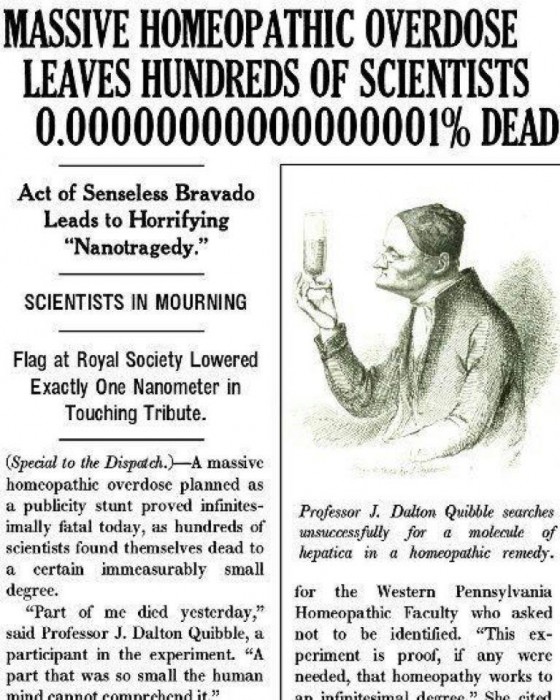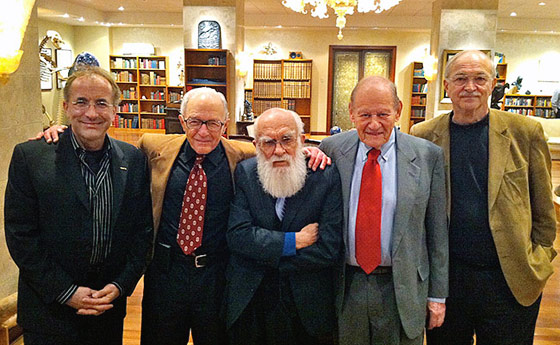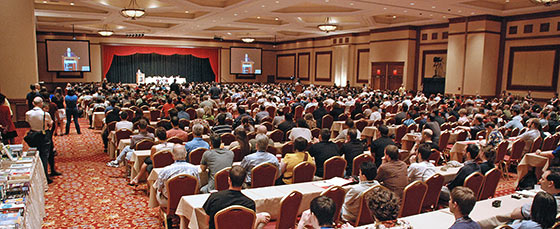Randi and the race-car driver

Most of us have read about homeopathy, and its claims to be an effective form of medicine. It was first developed by the German physician Samuel Hahnemann in 1796, and based on the old Greek and Medieval “Principle of Similars,” or the idea that “like cures like.” For example, Hahnemann observed that cinchona bark helped treat malaria in sick people, and caused similar symptoms in healthy people, so he reversed the logic and reasoned that whatever causes similar symptoms can be used to treat it. (Cinchona bark does contain natural quinine, a cure for malaria). He argued that if poison ivy causes skin rash, then diluted poison ivy is a cure for skin diseases. But his theory of “likes cure likes” was pure Medieval alchemy and mumbo-jumbo, completely invalidated when modern chemistry developed in the nineteenth and twentieth centuries. This archaic version of pre-modern medicine has persisted virtually unchanged until today. The ingredients used in homeopathy sound like those of a witch doctor or medieval apothecary (or something out of Harry Potter’s potions class): snake venom, ground honeybee, crushed bedbugs, live eels, wolf milk, arsenic, poison ivy, diseased tissues (including pus, tumors, feces, plus urinary discharges, blood and tissues from sick individuals), quartz, gold, oyster shell, and common salt. Their other ingredients, known as “imponderables”, supposedly “capture” electromagnetic energy by exposing alcohol or lactose to sunlight, X-rays, or lightning.
What makes homeopathy different from other alternative medicines that use bizarre ingredients is their key method: dilution. All these substances are then ground into fine powder to make a “tincture”, diluted in water, and then diluted over and over again. The “hitting” or “shaking” technique by the homeopath is very important because of “kinetic energy input” and its effect on their medicine. (This is just a fancy way of saying that more shaking probably mixes a solution better, but it is given a mystical mumbo-jumbo meaning in homeopathy). A typical homeopathic remedy has a “strength” of “30C” in their terminology. This means that the original agent has been diluted 30 times by a factor of 100 each time. A simple calculation means that this material has been diluted by a factor of 1 x 1060, or 1 followed by 60 zeroes (in common terms, one part “tincture” in one million trillion trillion trillion trillion trillion trillion parts of water). There are only 3 x 1025 molecules of water in a liter, so for all intents and purposes, there are no molecules of the “active ingredients” left and the homeopathic remedy is just water and nothing more. At this concentration, a patient would need to swallow 1041 pills (a billion times the mass of the earth) or 1034 gallons of elixir (a billion times the volume of the Earth) to consume even a single molecule of the substance. Even a stronger homeopathic solution of “12C” has only a 60% chance that one molecule of the tincture is present. Yet according to homeopathic theory, the medicine is stronger the more it is diluted. Most homeopathic remedies have been diluted so much that they are just small bottles of water. In effect, homeopathy has become the modern “water cure.” Continue reading…
comments (14)


